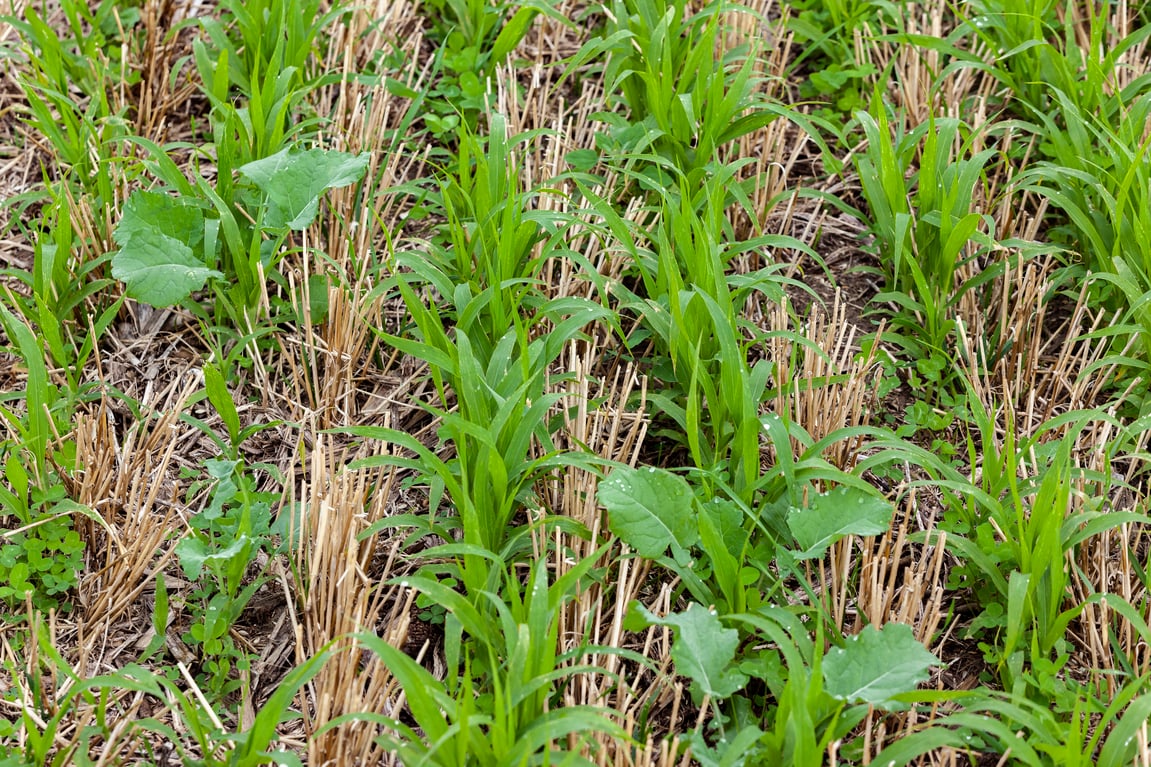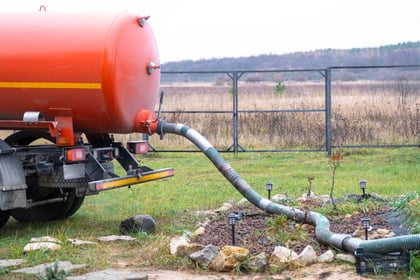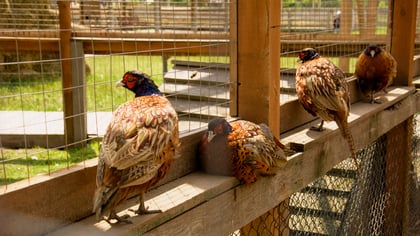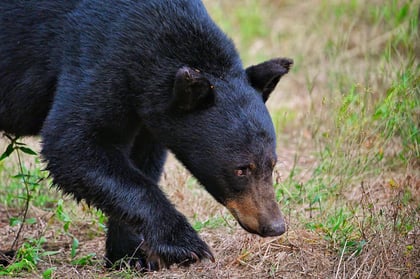Cover Crops For Gardens: A Beginner's Guide [Part 1]

Can you cover crop your home garden? Yes, you can! A regenerative farmer shares how to choose and grow the best cover crops for gardens here.
Growing awareness about regenerative agriculture has sparked an interest in applying these principles to home gardens.
And one of the best places to get started is with cover cropping your garden, a practice we implement on our regenerative herb farm.
In this two-part beginner’s guide to cover crops for gardens, we’ll get into the weeds (pun intended) about their many benefits to improve soil health, how to implement them into your homestead garden plan, plus tools and tips (in part 2) to shorten your learning curve.
Before we jump in, here are a few definitions of terms we will use below:
- Terminate: The process of killing off a planted cover cop completely so it doesn’t return and become a weed in your garden.
- Winter-kill: Describes the natural process of terminating a cover crop due to cold winter temperatures and exposure.
- Biomass: The organic material produced by a plant that includes the roots and above-ground plant matter.
- Nitrogen-fixer: Refers to a plant's ability to take nitrogen (as a gas) from the atmosphere and convert it to a form of nitrogen that the plant and microorganisms in the soil can use for growth.
What are Cover Crops?
Cover crops are not a new agricultural concept or technique. They have become popular because there is a growing need to preserve our topsoil and to improve soil fertility.
My favorite definition of cover crops comes from farmer, YouTuber, and author Jesse Frost. It is simple and “covers” their whole essence.
In his book “The Living Soil Handbook” Farmer Jesse defines a cover crop as,
“A crop that does not have a direct cash value but is grown to enhance soil and ecosystem health.”
Some examples of cover crops include rye, oats, peas, legumes and other grasses grown in the off-season to restore soil nutrients.
Although most people associate cover crops with large-scale farming operations, they’re also applicable and highly beneficial for the home garden.
Whether you have a couple of raised beds as a hobby or an entire homestead or hobby farm garden to help feed your family, cover crops can help you build soil and grow more robust, healthier plants.

How Cover Crops Work + Benefits
Cover crops help you use less inputs like fertilizer and chemical applications, while you work with the principles in nature to grow stronger, healthier more flavorful and nutritious crops.
One of the backbones of understanding soil health is in understanding the role that beneficial microscopic organisms inhabiting the soil play in communion with living plants.
You can’t separate the two.
Microorganisms help build organic matter in the soil, resulting in a boost in biological function (microorganisms' activity) and an increase in nutrient supplies (including water).
They also build soil structure, enhancing water holding capacity and helping with erosion control.
These microorganisms, through their ability to decompose organic materials and make minerals in soil more available to plants, help do all the things listed, but they can’t do it alone. They need plants to do it best.
Cover crops help by providing a constant source of food/energy from which these microorganisms can thrive using photosynthesis.
Don’t worry, we won’t get into a long technical explanation, but here is how it works.
Plants, like a rye cover crop, for example, take in carbon dioxide (CO2) from the air and hydrogen from water (H2O). Using energy from the sun, they make glucose and oxygen from these inputs. The oxygen is released into the air, and the glucose is both used by the plants and released as a fluid into the soil via the root system. This is the photosynthetic process.
The root fluids (aka: exudates) feed microbial communities, building them up and attracting them to the plants as a food source.
In return, the microbes in the soil build organic matter in the form of humus, and they seek to supply nutrients in the form of minerals and water to bring to or make more available to the plant.
These beneficial microbes want to maintain their favorite food source. It’s a symbiotic relationship that increases the plant's health, builds and maintains microbes in the soil and restores soil health, making soil more functional.
The great thing about cover crops is that they serve this very purpose and, if managed properly, can accelerate soil health without the use of synthetic fertilizers, herbicides and pesticides.
“Keeping the ground covered” is critical to preserving beneficial soil microbial communities.
Best practice is to have growing roots in the ground for all the reasons mentioned above, but if you can’t achieve that due to climate conditions or poor planning, which happens to me often, you can always mulch. Just be sure to mulch thick.

How To Choose The Right Cover Crop For Your Garden
With dozens of cover crops to choose from, overwhelm can set in fast.
However, I’ve learned it’s best to keep things simple, especially when you’re starting out.
Choosing just one to three cover crops will give you working knowledge. Plus, if you make a mistake, like letting something go to seed before you terminate, its impact is minimal.
Here is a short list of the best beginner cover crops for home or homestead gardens.
For extensive lists of cover crops, check out the book recommendations at the end of the article.
Oats & Field Peas
This is one of the classic cover crop mixes, and a relatively straightforward combination to manage.
Oats grow easily and benefit the soil by creating a large amount of biomass, which helps to suppress weeds. When combined with field peas, they serve as a lattice for the peas to climb.
Peas also produce substantial biomass, suppressing weeds and fixes nitrogen, which benefits soil, plant, and microbe populations.
Oats and peas are also easy to terminate, especially if you plant the cover crop in the late summer, because it self-kills when temperatures get into the teens for a few weeks.
Once this crop winter kills, it becomes mulch that keeps the ground covered, serving as an insulation layer to protect the microbe livestock as they go more dormant in the colder months.
If you plant this combination in the spring or as a winter cover in warmer regions where it doesn’t winter kill, it is also easy to terminate it yourself. We will cover tips for proper termination in part 2 of this series.

Rye, Oilseed (Daikon) Radish & Vetch
This trio is one of my favorites.
Rye is very hardy and stays green in colder regions, allowing you to keep your soil covered all winter with active growing roots in the soil.
It’s also aesthetically pleasing when everything else around you is brown and dead in the winter months.
Rye, daikon and vetch aren’t too difficult to terminate. However, you need to make sure you do so before it goes to seed and turns into pesky weeds come springtime.
Oil Seed Radish (aka: Daikon or Japanese Radish) is an ideal complement to rye. Although this one dies off in winter, its primary benefit is its tremendous tap root that can break apart compacted soils.
When terminated, the roots stay and decompose in place, replacing that taproot with beneficial organic matter and scavenging/storing nitrogen for the next crop to grow.
Common vetch or hairy vetch is excellent to mix into the above because it’s a nitrogen fixer.
When the crop is terminated, the root and the top layer on the surface (acting as mulch) release nitrogen for next crop.
The only downside to using vetch is that it can be tough to terminate in the warmer months, though it does winterkill.
Red Clover (or Crimson Clover)
Clovers are a favorite for garden cover cropping for various reasons.
Firstly, any clover can be mixed into cover crop combinations as a nitrogen-fixer (similar to vetches). You can replace the clover with vetch in the mix mentioned previously.
Secondly, they are winter hardy and can stay green in the colder winter months.
Thirdly, the red Clover blossom is a sought-after medicinal, making it a potentially profitable cover crop.
Finally, red clover is beautiful to look at. An added bonus.
The only downside to the clovers is that they are slightly more difficult to terminate.
Buckwheat
Buckwheat grows best in warmer months when soil temperatures rise, starting late spring and into summer.
It’s good at gathering phosphorus and building microbe populations, a great fill-in crop and is one of the easier ones to terminate by mowing.
Buckwheat is also ideal to keep the ground covered in regions with a gap in warm-weather growing.

Where To Find Cover Crop Seeds
Quality seed for cover crops is essential to guarantee your success, but you don’t need 50-pound sacks for gardening!
My favorite sources for small-scale cover crop seeds include:
Basic Tips For Planting A Healthy Cover Crop
Cover crops are direct-seeded and don’t require a lot of fuss before planting.
The only soil amendment I use is a high-quality compost. Anywhere from 1 to 2 inches helps to make a nice seed bed that is easy to plant into, acts like a mulch to help suppress any weed seeds from germination, adds organic matter to further increase soil health and provides some nutrients too.
If you do soil testing to balance out some of the major nutrients, this is a good time to add amendments before seeding your crop.
Lastly, be sure to irrigate the cover crop. This will make sure you get good germination rates and that the plants become well-established.
We’ll cover more about seeding in part 2.
What You’ll Learn In Part 2 Of Cover Crops For Gardens
Now you know everything you need to know about what cover crops are, how they work, the best types for gardens, where to source seeds and how to plant them.
In part two of this series, you’ll learn about the best tools to make planting easier, along with simple tips and techniques for effective cover crop termination.
Recommended reading on cover crops and soil health:





-1.jpg?width=100&height=100&name=Rolando%20Boye%20Head%20Shot%20(002)-1.jpg)





Your email address will not be published. Required fields are marked*